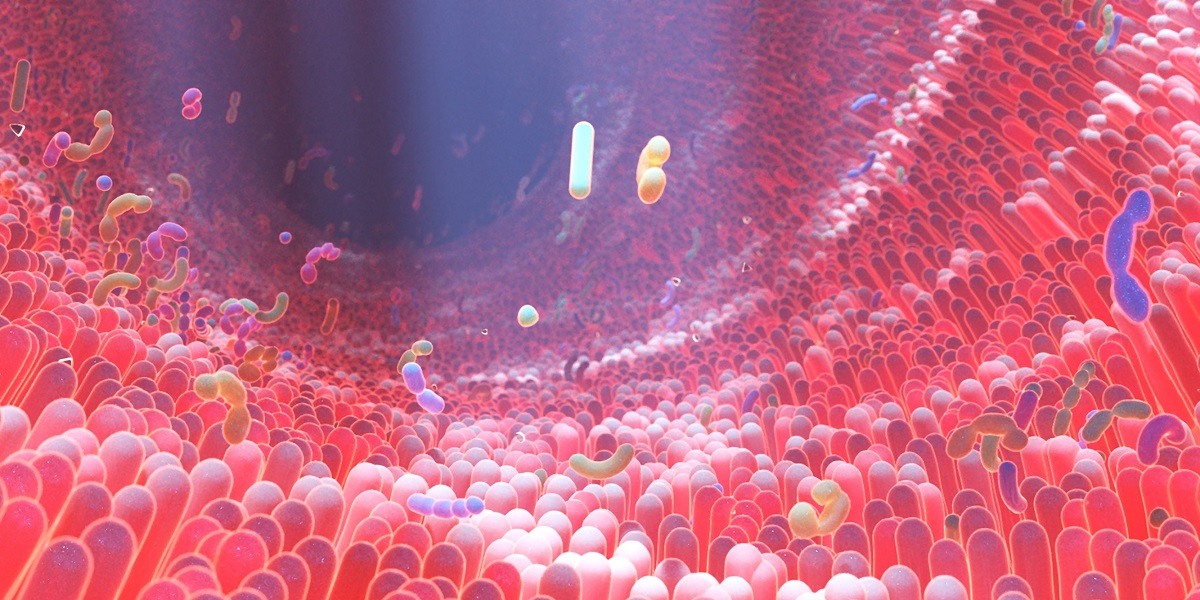Evidence suggests that imbalanced gut microbiota could advance Hidradenitis Suppurativa
Findings presented at the European Academy of Dermatology and Venereology (EADV) 2021 Spring Symposium suggest that an imbalance in gut microbiota plays a “significant role” in the progression of hidradenitis suppurativa (HS). This marks a critical step toward better understanding this painful, long-term, inflammatory skin disease and how its relapsing nature “significantly impacts” patients’ quality of life.”
The statement follows a small study conducted at Hacettepe University, in Ankara, Turkey, where researchers collected fecal samples from 15 patients with HS and 15 healthy individuals. Next, the researchers performed a 16S rRNA gene sequencing on all 30 samples to investigate differences in gut microbiota. This method of sequencing is commonly used to identify, classify, and quantify microbes within complex biological mixtures such as gut samples, including human gut microbiome.1
Researchers found that the HS patient group had significantly lower levels of three genera of bacteria – unclassified Clostridiales, unclassified Firmicutes, and Fusicatenibacter. Reduced amounts of these bacteria, referred to as Firmicutes, are known to disrupt the regulatory balance within the gut and trigger an inflammatory response.2
A Critical Balancing Act
The human gastrointestinal tract is home to a wide variety of bacterial organisms, known collectively as the gut microbiome.3 Numerous studies demonstrate a link between the gut microbiota and dermatological disease. Furthermore, it is hypothesized that a change in the gut microbiome can lead to cutaneous manifestations, referring to skin-specific signs, symptoms, and physiological changes of a non-dermatological disorder.4
This relationship between the skin and gut, known as the gut-skin axis, appears to be mediated by the immune system, with the interaction of microorganisms and the host immune system playing an essential role in maintaining skin homeostasis.5
On a more granular level, bacteria in the gut – such as Firmicutes – produce specific pathways and products of metabolism called short-chain fatty acids (SCFA).2 SCFAs help balance immune cells that stimulate or suppress an inflammatory response. When this balance is disrupted, there may be an unwanted inflammatory response.
As studies continue to support this dance between the skin and the gut, researchers are using this insight to refocus investigations concerning many inflammatory and autoimmune skin disorders, such as acne, psoriasis, and now HS.
That goes full circle back to the research presented at EADV’s 2021 Spring Symposium. The researchers characterized the composition of HS patients’ intestinal microbiome, hypothesizing that an imbalance may play a role in the high inflammatory burden of this disease. The theory sprang from past research coupled with the fact that HS is a multifactorial disease, caused by both genetic and environmental factors and exacerbated by obesity and smoking, all of which impact the gut microbiome.
“Our research provides evidence that the gut-skin axis is implicated in the progression of this chronic inflammatory skin disorder. While further evidence is required, our research suggests that dietary alteration and personalized probiotic supplementation might also be beneficial for HS patients, particularly since treatment options are limited for these individuals,” said Neslihan Demirel Ogut, MD, researcher at the Uşak University Training and Research Hospital, Uşak, Turkey.
Addressing this research in a press release, Marie-Aleth Richard, EADV Board Member and Professor at the University Hospital of La Timone, Marseille, called the smaller study a solid first step. “As one of the preliminary studies investigating HS, this pioneering research lays the foundation for future research into the management of this debilitating condition. It is an exciting breakthrough in a topic currently at the forefront of scientific research.”
1. “16S RRNA Gene Sequencing for Identification, Classification and Quantitation of Microbes.” LC Sciences – Biomedical Research & Discovery, 22 May 2014, https://www.lcsciences.com/discovery/16s-rrna-gene-sequencing-for-identification-classification-and-quantitation-of-microbes/.
2. Lobionda S, Sittipo P, Kwon HY, Lee YK. The Role of Gut Microbiota in Intestinal Inflammation with Respect to Diet and Extrinsic Stressors. Microorganisms. 2019;7(8):271. Published 2019 Aug 19. doi:10.3390/microorganisms7080271. Available from https://www.ncbi.nlm.nih.gov/pmc/articles/PMC6722800/. Accessed June 10, 2021
3. Silva YP, Bernardi A, Frozza RL. The role of short-chain fatty acids from gut microbiota in gut-brain communication. Front. Endocrinol. 2020 Available from https://www.frontiersin.org/articles/10.3389/fendo.2020.00025/full. Accessed June 10, 2021
4. Ellis SR, Nguyen M, Vaughn AR, et al. The Skin and Gut Microbiome and Its Role in Common Dermatologic Conditions. Microorganisms. 2019;7(11):550. Published 2019 Nov 11. doi:10.3390 microorganisms7110550. Available from https://www.ncbi.nlm.nih.gov/pmc/articles/PMC6920876/. Accessed June 10, 2021
5. De Pessemier B, Grine L, Debaere M, Maes A, Paetzold B, Callewaert C. Gut-Skin Axis: Current Knowledge of the Interrelationship between Microbial Dysbiosis and Skin Conditions. Microorganisms. 2021;9(2):353. Published 2021 Feb 11. doi:10.3390/microorganisms9020353. Available from https://www.ncbi.nlm.nih.gov/pmc/articles/PMC7916842/. Accessed June 10, 2021.







Leave a Reply